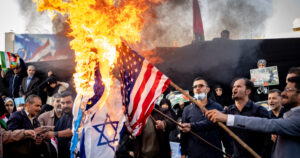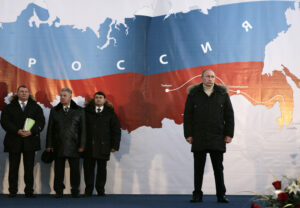The assessments of Ukraine’s prospects in its war of defence against Russia, which enters its third year tomorrow, are noticeably less upbeat than they were last summer. Back then, the Ukrainians were riding high. Given little to no chance when Vladimir Putin’s army invaded, by November 2022 they had expelled his forces from the north and north-east of their country, as well as from the part of Kherson province on the Dnipro River’s right bank.
The current mood of pessimism stems partly from Kyiv’s failure to punch through Russia’s defences in the south during the summer-autumn counteroffensive of 2023. No less important has been the doubts about continuing American military aid. President Joe Biden’s request to Congress for another $61 billion in assistance for Ukraine — most of it military — seems dead in the water thanks to dogged opposition in the House of Representatives from legislators loyal to Donald Trump.
This is already having repercussions in Ukraine: the fall of Avdiivka last week, representing Russia’s greatest territorial gain in nine months, has been directly linked to dwindling supplies of ammunition. Zelensky referred to this shortage as an “artificial deficit” created by slow delivery of supplies, and continued military support from the United States, supplemented by Britain and Europe, could still help Ukraine regain momentum, even if not this year.
However, if American support falters or ceases, Britain and Europe have the power not only to keep Ukraine in the fight, but, eventually, to help it make the advances needed to reach a favourable negotiated settlement. The second of these two outcomes will require Europe to rethink its military role in ways that it has never had to do since the formation of Nato in 1949. But if it proves up to the task, the repercussions will extend well beyond this conflict. Before the invasion, Russia was widely heralded as one of the world’s two superpowers. In the event that Ukraine can regain at least some additional territory and bring the war to a satisfactory end, Russia will forever be seen in a different light: as a threat Europe can manage largely on its own.
The ground game
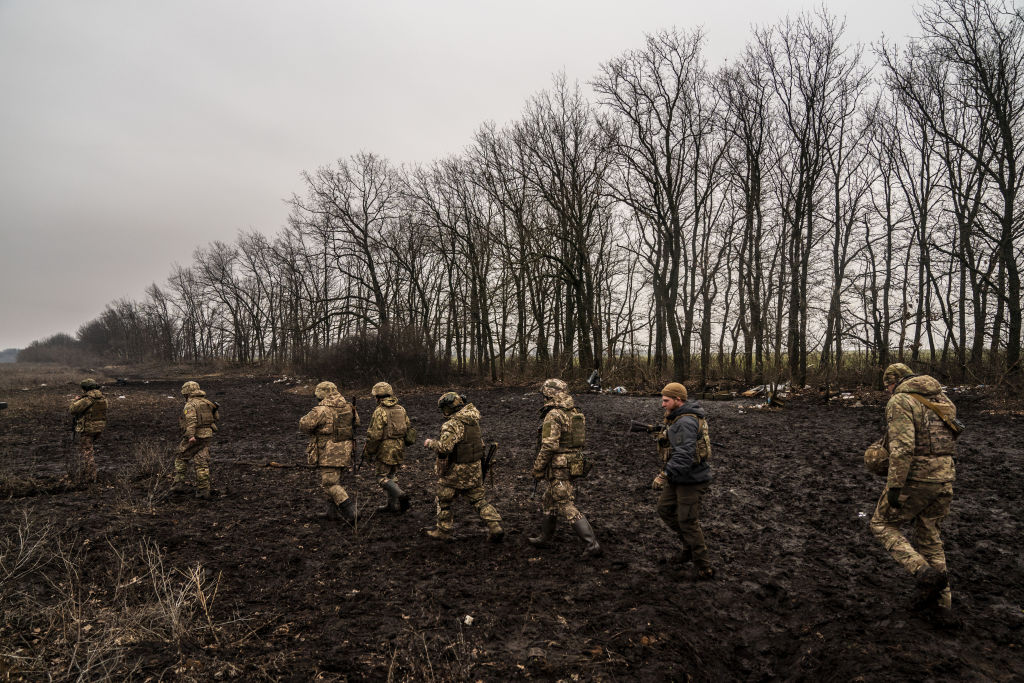
That said, there’s no denying that Ukraine’s 2023 counteroffensive failed. It didn’t break through the Russian-held part of Zaporizhzhia province (on the Dnipro’s left bank) to Tokmak (an important supply hub) let alone to Melitopol further south. Russia had prepared well to foil that gambit, relying on the kind of extensive, layered trenches and fortifications — the so-called “Surovikin lines” — not seen in Europe for a generation.
Moreover, Russia’s increased investment in drones helped batter Ukraine’s armoured and mechanised brigades, while the improved accuracy of its artillery and helicopter gunships disabled Ukraine’s American-supplied mine-clearing systems. Belying stereotypes of a rigid and hyper-centralised force, the Russian army also learned from its mistakes, adapting better electronic countermeasures against the US-supplied HIMARS missiles and Excalibur artillery shells. During my most recent visit to Ukraine, in December, a drone operator described the advantage Russia had acquired in FPV (first-person view) drone variants, and its vastly improved electronic jamming technology — its new Izdeliye-55 miniature FPV quadcopter, is reputedly all but immune to jamming.
Still, the fact that Ukraine — which lacked sufficient airpower, long-range missiles and general materiel — failed to retake swathes of territory during its counteroffensive remains the war’s “dog bites man” story. The true surprise is that Russia is not only still fighting Ukraine two years after invading it, confident of a quick victory, but that it barely shifted the frontlines in the whole of 2023. Its net gain was a bare 180 square miles (for comparison, Kyiv, Ukraine’s capital, covers 324 square miles), and that owed mainly to advances in and around Bakhmut, a town for which it fought for nine months, relying heavily on prisoners, a private army, and various militias. The conquest of Avdiivka similarly required four months of fighting and some 20,000 casualties, notwithstanding Russia’s massive numerical superiority in weaponry (8:1 in artillery shells, for example).
Despite Russia’s vast and continuing advantage in every measure typically used to assay military balance between states, it has failed to transform that superiority into juggernaut-like results. A vivid example can be found in the small beachheads Ukraine established in mid-November on the Russian-held bank of Kherson province, mainly in Krynky village, after a river crossing under heavy fire. Though Ukraine had only a small number of marines and no armour or artillery on site to speak of, it has preserved or extended the area it holds through repeated Russian assaults, killed numerous troops, and destroyed many armoured vehicles. All this from what a New York Times analysis painted as Kyiv’s Krynky “suicide mission”.
In Russian media, there is no such misconception: one military blogger lambasted the “idiots” who kept sending armour to Krynky, only to have “90%” of it destroyed; others demanded the sacking of Colonel General Mikhail Teplinsky, the army commander in Kherson. And Krynky is not an aberration — Russia’s equipment losses have been remarkably high elsewhere. Returning to Avdiivka, one single extended assault in November led to the destruction of 100 Russian tanks and 250 armoured vehicles.
Russia has also suffered many more casualties than one would have expected against a much weaker opponent: according to British estimates, 302,000 by late November plus “tens of thousands of deserters”. By contrast, US intelligence estimates around 70,000 Ukrainian troops had been killed and 120,000 wounded by last autumn. (This would bely Russia’s implausible claim, widely circulated, that 300,000-350,000 Ukrainian troops have died.)
The losses in some Russian units are devastating. Russia’s elite 155th Guards Naval Infantry Brigade was almost eviscerated when Russian commanders insisted upon their habitual “meat wave” assaults on Vuhledar — so high were the losses that the marines turned on their generals. A year into the war, the losses of the 155th at Vuhledar and elsewhere were so bad that the unit had to be reconstituted multiple times.
Russia’s overall equipment losses have also been staggering. The Oryx data base, which tracks destroyed, abandoned, or captured stock, lists as of mid-February: 2,735 tanks; 3,421 infantry fighting vehicles (IFVs); and 1,020 artillery systems. Tank losses have been severe enough to require the requisitioning of models dating back decades. Ukraine’s corresponding losses have been significantly lower: 742 tanks, 848 IFVs, and 472 artillery pieces. Russia had an overwhelming superiority in tanks when the war began but, because of these losses, by July the two armies were nearly at parity.
Some of Russia’s best weapons — the S-400 air defence system, the supposedly unstoppable Kinzhal ballistic missile, and Yastreb-AV counterbattery radar, which costs $1.5 billion and was destroyed soon after its first appearance — have not lived up to their vaunted reputation. Ditto the famed, top-of-the-line T-14 Armata tank, withdrawn from the battlefield soon after its debut. Western weaponry has been essential here. Without American and European tanks, air-defence missiles, anti-tank guided missiles, multiple rockets systems, and cruise missiles (the Anglo-French Storm Shadow/SCALP) Ukraine could never have withstood the Russian army’s assault, much less have inflicted such large losses on it.
Russia at sea
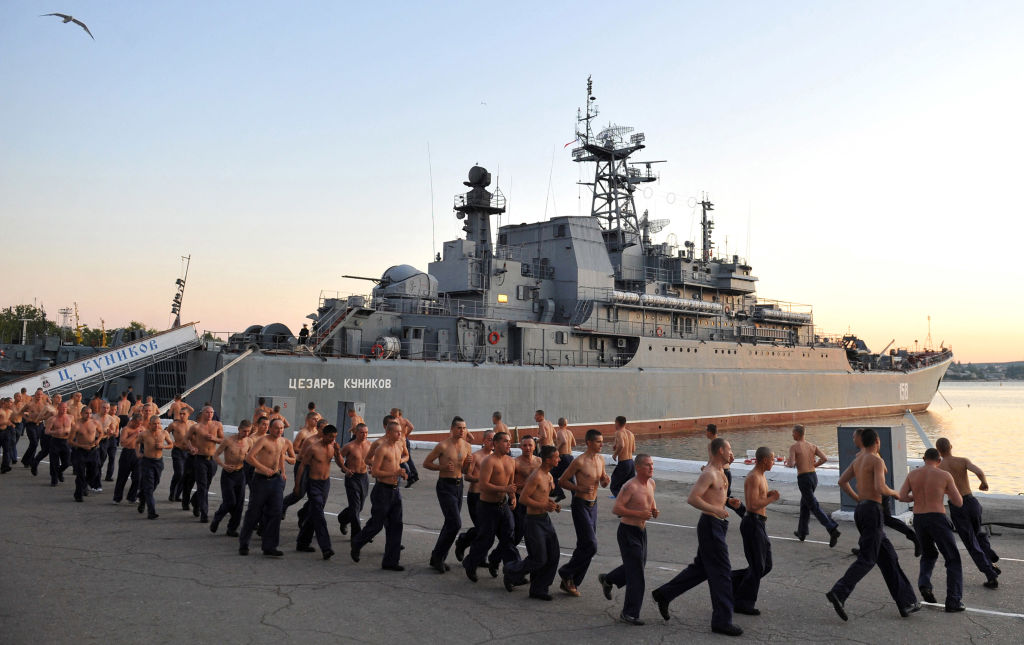
Perhaps even more surprisingly, though it lacks a fully-fledged navy, Ukraine has severely hampered Russia’s Black Sea Fleet, based in Crimea. Using missiles, aerial and naval drones, and commando raids, it has hit the Fleet and its infrastructure so many times (beginning with the triumphant early sinking of its flagship, the Moskva, in April 2022, using a homemade R-360 Harpoon missile) that Moscow has had to relocate ships and submarines — in some cases all the way to Russia’s mainland Krasnodar region.
But Ukraine targeted the latter as well, damaging one Ropucha-class landing ship in August, before attacking the Black Sea Fleet’s Sevastopol headquarters in September, claiming to have killed 34 officers. The Storm Shadow/SCALP cruise missiles have been indispensable here and, in all, Ukraine claimed to have damaged or disabled about a third of the Fleet’s vessels: 25 ships and one submarine according to most recent figures.
These victories have had several repercussions, not least in sowing discord at the top of the Russian leadership. One attack early this month on the Crimean airbase at Belbek killed air force Lt Gen. Alexander Tatarenko, before Ukraine sunk another Ropucha-class landing ship (the Caesar Kunikov) using a swarm of sea drones, precipitating the firing of the Fleet’s commander, Admiral Viktor Sokolov, on 15 February. Any proper naval strategy these commanders might have developed has also been sabotaged. It has become much harder for Russia’s Black Sea Fleet ships to fire cruise missiles at Ukrainian cities, forestalling wintertime strikes on Ukraine’s electrical network.
Ukraine has also managed to maintain a sea corridor for food exports from its own Black Sea ports (even after Russia exited the Black Sea grain deal) despite persistent Russian attacks on its port infrastructure. Earnings from food have dropped significantly since the war started, but a blockade would have dealt the cash-strapped country a body blow. By January though, Ukraine’s seaborne exports (not just in grain, but all shipping) actually reached pre-war levels.
“An army marches on its stomach”
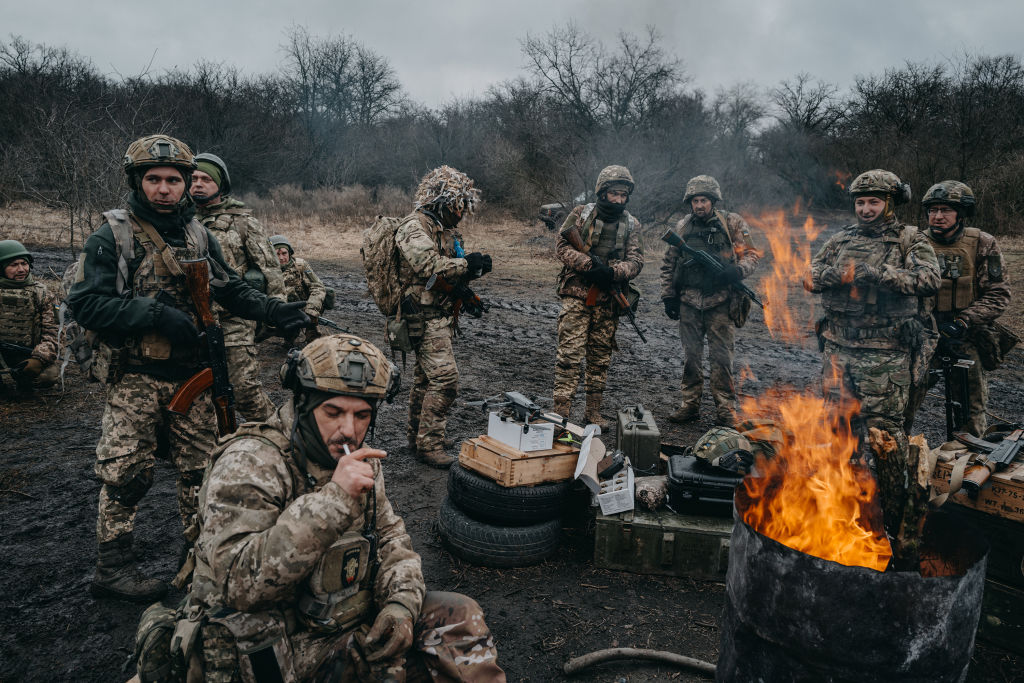
This aphorism, attributed by some to Frederick the Great and others to Napoleon, highlights how essential supplies from the rear are for success at the front — not just armour and artillery, but food, fuel, and medicine. Ukraine has done a remarkable job of starving Russia of these supplies. To take an example, the 12-mile-long Kerch Strait Bridge was under repair for months following the October 2022 truck bomb explosion engineered by Ukraine. They then attacked the bridge again last July, this time with sea drones. Though bridge’s railway tracks remained intact this time, the damage to the roadway necessitated lane closures until November. Fears of attack also led to traffic suspensions on the bridge at least three times in 2023.
Ukraine similarly struck the Chonhar Bridge, which connects north Crimea to Kherson province, last June, July and August. And other military-related Crimean sites targeted include Saky, Yevpatoria, and the Zaliv shipyard in Kerch. These strikes have disrupted supplies headed to Russian forces in the south via Crimea, the main conduit, forcing Moscow to rely more on the land corridor it created after the invasion between Crimea and south-western Donbas. Yet that passageway too has come under Ukrainian fire. On top of that, in January and February, Ukrainian drones struck Russia’s energy infrastructure — loading terminals, oil refineries, and storage sites — in the Baltic Sea, the Bryansk region, and in Volgograd and Ryazan.
A RAND analysis recently asked whether logistics would prove to be “Russia’s undoing in Ukraine”. This much is clear: an important Russian weakness has been laid bare. This week, Western officials claimed that Russia was suffering from severe shortages of ammunition and weapons of its own. And, apart from making it harder to sustain prolonged offensives, supply shortfalls have deprived new recruits of the basics — in some cases family members have had to provide essentials. Morale has therefore become a chronic problem for Russian commanders, and played a role in the Wagner Group’s June rebellion.
A vision of victory
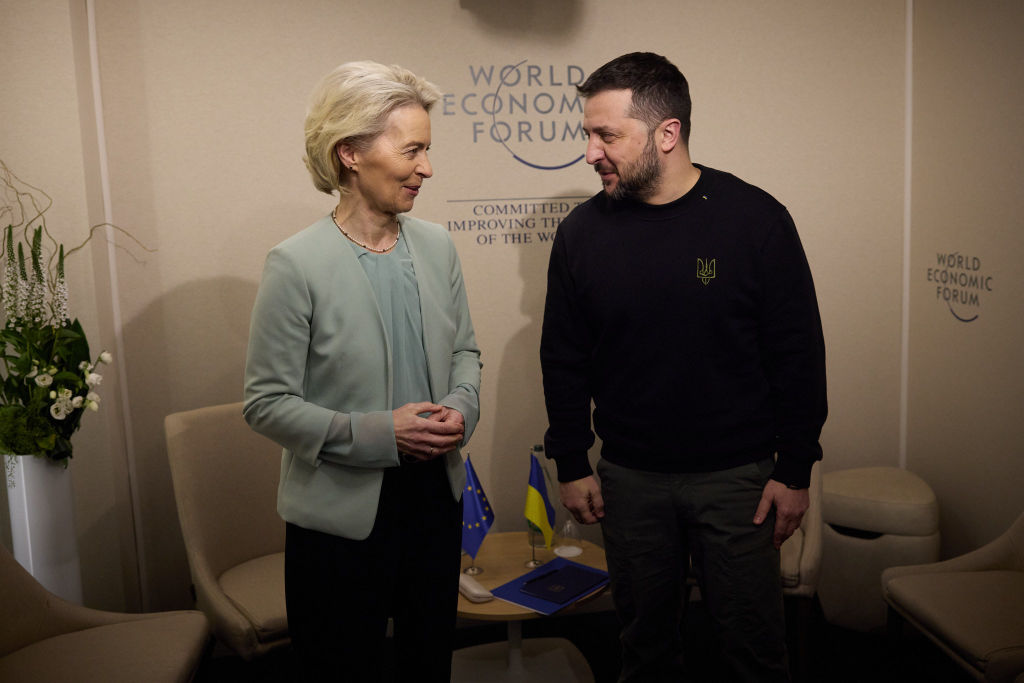
The Russian army is certainly not, as they say in Texas, all hat and no cattle. But, amid the negative coverage of Ukraine’s counteroffensive, its considerable flaws and failures have been overlooked. Still, the Ukrainian army’s successes would have been impossible absent the massive inflow of Western weaponry — some $100 billion since the invasion — and in particular the US capacity to send close to half, in dollar terms, of what its Nato allies have provided. But given the Russian army performance in Ukraine, the oft-heard claims that Ukraine’s defeat would expose Nato to attack has become dubious.
To be clear: Russia retains a formidable army that can still do considerable damage to Ukraine. What’s more, Ukraine’s vulnerability has increased because of the mounting shortages its forces now face and the uncertainty surrounding future American military assistance. Despite Russian losses, Putin has not seriously called for negotiations. On the contrary, he stated recently that the goals of the “special military operation” remained unchanged, would be pursued till victory, and that Western support for Ukraine would eventually dissipate.
Nor have the war’s human and material costs sparked sustained mass discontent among Russians, let alone threatened Putin’s grip on power. He seems confident that time is on his side. To push Ukraine into negotiating now would amount to decreeing its partition — and at a moment when Russia, despite assertions to the contrary, is hardly on a roll. That said, maximalist territorial goals — the ones originally advocated by the Zelensky government and its strongest Western supporters — will likely prove as unrealistic as betting on Putin’s political demise.
But an outcome in which Ukraine retakes even more of the territory it has lost since February 2022 would still be a major victory and, if it comes to negotiations, Kyiv will be in a stronger position if it has gained more ground. It should demonstrate to Moscow its readiness to fight on: by mobilising its planned 500,000 new soldiers and breaking up the corrupt, murky, and intricate system that helps men dodge military service (you can find plenty of these fellows in Kyiv’s trendy restaurants). The Ukrainian army must reconstitute itself and adopt a strategy of what Mykola Bielieskov calls “active defence”; not mount a major offensive that would risk high losses in troops and materiel, something it can ill afford. Russia may have lost more soldiers than Ukraine, but it also has a far larger pool of military-aged men to draw from.
Further gains by Ukraine will require not only Congress’s approval of the 2024 aid package, but also Europe’s willingness to play a much bigger role. But, having long neglected its defence industries because of the ironclad American military guarantee, Europe cannot step in quickly. To take an example, the Europe Union was supposed to deliver one million artillery shells by March; so far it has sent half that amount and expects to meet its target only by the end of this year. At best, an increase in European help can keep Ukraine in the fight for the rest of this year so that a larger flow of weapons from Europe down the line will enable it to make bigger advances. That will not happen easily or quickly, which means that Ukraine is vulnerable in the near term.
But Europe does have the means to begin boosting military spending and investing more in its defence industries — and it should, if not only to gain a measure of strategic autonomy and reduce its generation-long reliance on America.
Sheer geography dictates that Ukraine’s fate will always matter more to Europe than it will to the United States, which will focus increasingly on China in the years to come. In addition to arming Ukraine, Europe should eventually take the lead in training and equipping Ukraine’s armed forces so that Kyiv has the capacity to adopt a policy of long-term, armed neutrality. Some describe this as the “Israel model”, though Finland’s defence strategy from the end of the Second World War until it joined Nato in April may be the better comparison. Alternatively, a subset of Nato states could guarantee Ukraine’s security, but on the understanding that any resort to force against Russia to defend Ukraine would not trigger Article V of the 1949 Nato Treaty, the commitment to collective defence. This would scarcely substitute for Nato membership, but it would give Ukraine more protection than armed neutrality.
If the uncertainty regarding future American military aid to Ukraine marks a turning point for Kyiv, it does the same for Europe. It is often said that Europe cannot organise defence arrangements of its own because a large, disparate collection of states cannot act in consort. But that is belied by the centralisation the European Union and its associated institutions have undergone. And the EU has already taken some steps toward arming Ukraine autonomously: the European Peace Facility, established in March 2021, has provided Kyiv more than $5 billion in war-related aid.
The political obstacles to greater European defence autonomy and the challenges of ramping up European defence industries are well-known — Europe’s leaders have never looked less united around its continental institutions. Yet given the combination of the shortages Ukraine faces, the doubts about continued assistance from the United States, and the prospect of Donald Trump’s return to the White House, Europeans ought to consider charting a new course, one that does not require them to dispense with Nato, but adapts it to the present. The impediment to such a change is not a lack of means, but the inertia created by an entrenched way of thinking that makes change seem impossible. The alternative risks not only Ukraine’s long-term future, but Europe’s too.
Disclaimer
Some of the posts we share are controversial and we do not necessarily agree with them in the whole extend. Sometimes we agree with the content or part of it but we do not agree with the narration or language. Nevertheless we find them somehow interesting, valuable and/or informative or we share them, because we strongly believe in freedom of speech, free press and journalism. We strongly encourage you to have a critical approach to all the content, do your own research and analysis to build your own opinion.
We would be glad to have your feedback.
Source: UnHerd Read the original article here: https://unherd.com/

